The Eorzean Aquarium in Plot 59, Ward 16, Lavender Beds (Malboro, Crystal DC) Field journal of Innis'a Bvalvah(Story-driven exhibit at the Eorzean Aquarium)
Don't wanna be here? Send us removal request.
Text
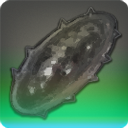

Field notes on: The Pitch Pickle Location: The Ruby Sea ocean fishing voyage Locale: Deep sea
The Pitch Pickle - as the name may suggest - is perhaps most well known for the deep black pigment stored in its body. I am unsure why it was not adoped as a new source of our precious Inkshell ink in the past, but I shall not dwell on the matter. What is more interesting about this specimen, is its place in history. I have referred to many a history tome from Hingashi on the matter, where this little mollusc had a central role in the dyeing of teeth among Hingan nobles.
This was common practice in generations past - and given the large population still dwelling beneath the Ruby waves still holding strong - I understand why it was such a popular choice. Full glad am I to not favor such fashion today, yet I cannot help but be curious to once try this custom. I only pray to Thaliak that a vile taste does not accompany its pigmented flesh.
0 notes
Text


Field notes on: The Sea Pickle Location: La Noscea, Vylbrand Locale: Shallows near beaches
My examination of the colorful, endearing little sea slugs continue with this species. What I learned from local fishemen and culinarians is that it’s highly sought after in culinary pursuits - particularily from Sea Wolves. I’ve not yet uncovered why they favor this little mollusc over others, but I have been invited to try tasting one in an upcoming feast.
While I do not delight in the culling of my precious molluscs, I must strive to understand every aspect of their lives and existence upon this star. To that end I must also experience their presence in the livelihood of craftmanship! The Sea Pickle is not a difficult species to locate or harvest due to its surplus population in Vylbrand, so my concerns for their conservation is rather low. I hope to examine them in their habitat when time allows but will settle to observe their use at the banqet.
0 notes
Text
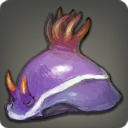
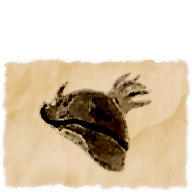
Field notes on: The Sea Cucumber Location: Middle La Noscea Locale: Shoreline shallows
Let it be said: following my examination of the bone cleaning species, I was in need of what one may call a palette cleanse. As much as I adore their vivid colors and unique method of living, my nostrils are a bit too closely acquainted with the smell of rotting bone at this point.
The vibrant Sea Cucumber is a common find along the shores of La Noscea, and I am absolutely smitten by its Bonchal Plume. This seemingly decorative attachments on the animal’s behind is actually how it collects oxygen from the surrounding water - its gills if you will. Having such a delicate organ exposed this way is nothing short of bold bravery when you’re such a small creature.
I’ve heard of multiple species of sea slug in Eorzea, and I will proceed to seek out those I can examine without putting myself in harm’s way. Please treat these little slugs with utmost care, should your paths cross.
0 notes
Text


Field notes on: The Bone Cleaner (comparison to the Marrow Sucker) Location: Drybone Locale: Shallow drinking water reservoirs
Today I returned to the shallows of Drybone where I last examined the species known as the Marrow Sucker. At first I was convinced that this was the only species to thrive here. The star has a habit of flipping my impressions over and present a new angle, and this little snail is no exception.
The Bone Cleaner is a smaller species compared to its larger cousin, at a mere 11 ilms. The Marrow Sucker is slightly larger on average at 19 ilms, yet the specimens of both species are so close in their size distribution that they are difficult to distinguish from one another. The color of their foot, shell and stripes are remarkably similar, so I can only theorize that they are closely related. What separates them, I wonder?
1 note
·
View note
Text
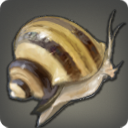

Field notes on: The Bone Melter Location: Gyr Abania, Dimwold Locale: Shallow water pools
I am not much of a trendsetter but I thought I may tackle the subject of bone-feeding species for a short moment. As I wrote in my previous report, the Marrow Sucker of Thanalan will make any calcium-rich bone quiver. The Bone Melter of Gyr Abania is no different. Perhaps they are linked to a common ancestor?
The way in which this species latches itself onto the carcasses that end up in their waters is fascinating. One must apply ample force (and technique) if one hopes to pry them free of the unfortunate animal. Locals near Dimwold carry the shells of this snail in various forms such as necklaces (bag decorations or the like) in the faith that it will bring them good fortune. I suspect it is due to the vibrance of their shells. Perhaps I should try carrying one myself, and watch my luck leap forward.
This concludes my study of the snails that rule the shallows, at least of the bone melting variety.
0 notes
Text
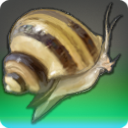
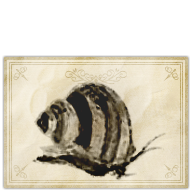
Field notes on: The Marrow Sucker Location: Drybone Locale: Shallow drinking water reservoirs
It is perhaps not surprising to learn of the origin of this species’ name. I found one particularly large specimen gobbling down on the bones left behind by a deceased Karakul with vigor. It is relieving to know that our star is outfitted with such diligent and honest workers to take care of the aftermath of death - though I admit I am treating this subject much too scientifically.
I sat still in the water to observe the specimen as to not scare it away. The way it moved its mouth and radula (a tongue-like organ filled with teeth) across the bone, I saw distinct patterns left in its wake. This may also be why its shell is both hardy and vibrant in pigmentation, having such large deposits of calcium available.
I hope to study this species more closely in the days ahead, and hope to maybe collect sound samples of its munching fever.
0 notes
Text


Field notes on: The Antlion Slug Location: The Sagolii Dunes Locale: Deep sand pits in Thanalan’s desert
Before I go on about my thoughts and discoveries about this species I wish to be clear on that I did not expect to discover a mollusc dwelling beneath the scorching sands of the Sagolii desert. While we are farmiliar with resilient species, this slug needs be commended for its brave and strong will to thrive.
This specimen was a rough capture when we conducted sampling and at first I was convinced I had captured something far more fish-like. We quickly discovered that it was coated in a layer of mucous so thick that we had significant trouble removing it at the end of our survey. While we do not know much about its habits, we do know that it has starred in a work of fiction. In this work the author depicted the slug as an intelligent ruler of an underground kingdom. While we did come across multiple ruins from Allag, we did not find any decisive proof of such a place.
My conclusion thus far is to handle this slug with care, and to bring coverings for your hands if you do not wish to have them glued to your garments.
1 note
·
View note
Text
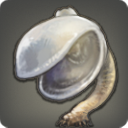

Field notes on: The Mahu Wai
Location: The Sea of Clouds
Locale: Floating islets
As you may have seen in my previous notes, I am fascinated by the idea of molluscs in the sky. The Mahu Wai was an accidental find during my first expedition to Eorzea when my lure snagged onto one of their stalks, ripping it from its stationary place under the floating island.
According to local tongue, the name Mahu Wai comes from the Vanu word for “bottomless greed”. This may be attributed to their giant mouths by which they consume the prey they catch. Perhaps bottomless maws would be a more suited nickname, but it is a fitting one nonetheless! I’ve only examined a single spcimen thus far and find it truly fascinating that this species grows in such numbers in such thin air.
I can’t conclude much from the initial examination, other than that I would rather not try to insert my fingers into this mollusc’s giant maws.
0 notes
Text
youtube
Introducing the Faculty of Conchology!
The work of novice researcher Innis'a Bvalvah is not over, and we are happy to announce that the Faculty of Conchology is open to visitors! This venue welcomes any and all to visit and observe the hard working researchers as they strive to study and preserve the molluscs of our star.
The Faculty features multiple exhibits, showing where and how the species live and thrive. As they make new discoveries, the exhibits may evolve.
Light DC - Alpha - Mist Ward 23, plot 42 Always open!
0 notes
Text
The Mishap of the Misplaced Mollusc - All Tanks Wake 2023
youtube



All Saint’s Wake of this turn of the year had a most terrible outcome, truly a vile act of theft right here in my very own chambers. While I was gone for a few days - examining a new species of snail - someone stole my precious Ignus Horn Print!
The staff at the Eorzean Aquarium, as well as our very own Inspector Red Herring, worked tirelessly to find the culprit and return the print to me with haste. How it warmed my very despaired heart to see so many adventurers coming from far and wide to assist in finding my precious print.

Through their investigation and collective effort, the culprit behind it all turned out to be my old Studium classmate, Makoiousxous Thresher?! But why? Why would you do such a thing? If you desired the print with such passion, perhaps I could have procured you one..
Recordings and information about the event:
Read more about the event on Eorzean.fish
Watch DarcyBits’ VOD of the event here
Watch Faux’s VOD of the event here
Watch ChiliFarmer’s VOD of the event here
0 notes
Text

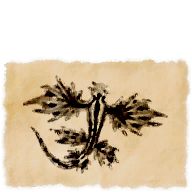
Field notes on: The Starflower
Location: Sea of Clouds
Locale: Aetherical Currents
Molluscs capable of flight will never stop amusing me both as a man of science and personally. I’ve seen similar species at sea, that use their long and sail-like tendrils to float on the ocean currents. Yet, to see them employ the same technique to float much like a parachute across the sky feels almost otherworldly.
I’ve not collected many speciments just yet, and find myself struggling to even safely capture any without putting my own vessel at risk of falling off one of the islands. Perhaps some kind of net would be helpful? I must perform some tests to be certain, but I believe it would be a much safer pursuit than throwing myself off the nearest cliff.
One thing, though, is for certain: The Starflower is yet another example of just how diverse the populations of Eorzea truly are. They will not be hindered from taking flight, even without wings.
0 notes
Text


Field notes on: the Cindersmith
Location: Halo, The Dravanian Forelands
Locale: Magma pools
The Cindersmith surprised me greatly when I first snagged one during my expedition across Eorzea. I did not expect the tales of magma-dwelling fish to be true to begin with, let alone that the molten pools would have these robust and hardy snails living within.
What struck me the most was its likeness to the Armorer found in La Noscea’s deep oceans, as well as the Sabaton. I have no direct explaination for their similarities, but it does bring into question whether the Forelands were once hidden beneath a vast ocean. That would certainly explain how the Cindersmith came to exist upon these mountains - though it does not explain directly how they developed to withstand the temperatures of molten earth. I would theorize that their usual habitat around hydrothermal vents would make the Armorer (and Sabaton, by relation) predispositioned to the following evolution.
This theory does require further investigation and discussion with scholars who have studied these snails in more detail than myself. I can not conclude much just yet, but these snails have certainly made my next venture into the Great Gubal Library more focused.
0 notes
Text

Expedition Mollusc Update!
A new letter has been published by Innis'a, containing his findings and future objectives following his expedition! You can read the letter in full at the Ao3 link above!
0 notes
Text


Field notes on: the Armorer
Location: Swiftperch, Western La Noscea
Locale: Deep ocean - hydrothermal vents
The Armorer is one of the rare species of our realm, which I came to learn once my study into this species began. They are a rare sight for any fisher, and keep to the deepest levels of our oceans in large clusters - all focused around hydrothermal vents. This intrigued me, for I had also found a similar species far within the mountains of the Forelands. What could this mean?
Upon examining a specimen, I was taken by how its body is entirely covered by metallic scales - making it appear almost draconic in appearance. Its shell is similar, and built like the toughest armor on the outtermost layers. Unfortunately, the specimen did not survive being brought to the surface despite our best efforts to accomodate its needs, so all notes and findings will only cover so much.
I have much more to investigate, including the seemingly identical lava snail from the caverns of Halo, and can not conclude much from this initial examination. What is also of further interest is the fact that there exists such vents in the oceans around La Noscea.
0 notes
Text




I want to share some of the art I’ve made of Innis'a while I was planning the exhibit on Malboro!
0 notes
Text
Did you miss my panel during Fishfest 2023? Fear not! The vod is already available, with links to additional reading and resources in the video description!
15 notes
·
View notes
Text
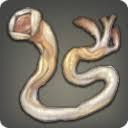

Field notes on: the Shipworm
Location: Upper Thaliak River, the Dravanian Hinterlands
Locale: Freshwater rivers
At first glance, I was not entirely convinced of its molluscan classification, yet it carries all traits required to be cataloged as such. Its preference for consuming cellulose has lead to its naming, as it is often found within the hulls of ships from all stretches of our star. One can quickly tell if their vessel has stowaways by the burrows they leave behind.
When I examined my first specimen, I was struck by its sheer size. Although they find refuge in the hulls of many a ship, some of these fantastic creatures construct an outer shell - much like that of a clam - and breathes by means of finger-like tendrils at the end of its long body. Truly, our star has yet to cease surprising us with her inhabitants.
Conclusion: I have yet to understand how such numbers of a bivalve mollusc that is otherwise found on ocean-faring vessels found their way into the freshwater spills of the Thaliak River. Further examination required.
0 notes